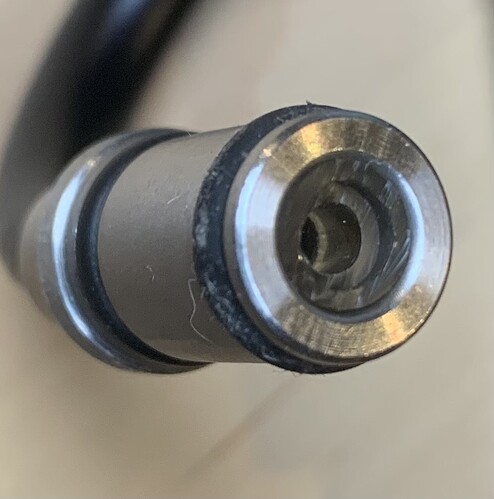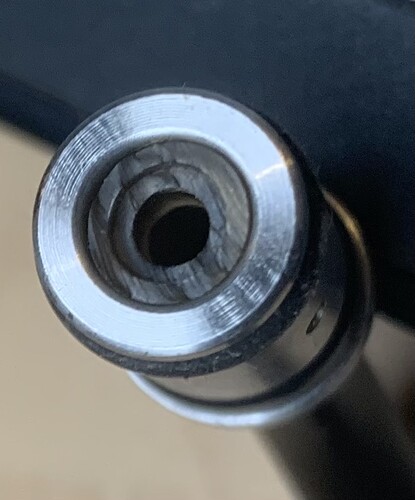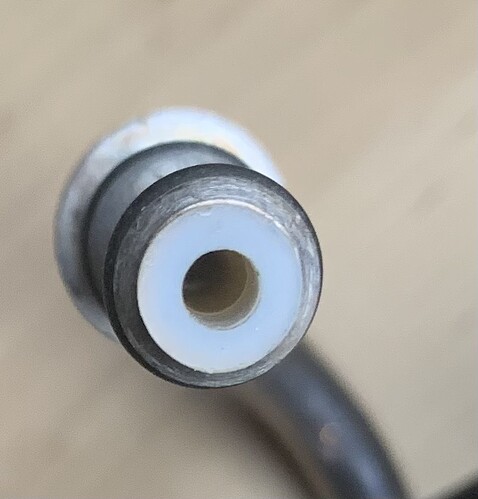I’m in the process of fixing up a slightly busted Pico I found used. Current problem is the breath control.
Troubleshooting:
- When blowing into the Pico through the breath pipe, no expression is shown on the breath CC.
- When removing the pipe and blowing (awkwardly) into the Pico, breath CCs show normally.
- When covering the end of the breath pipe and blowing, (as shown in the image below) no air escapes.
- When (gently) poking a paperclip into the small holes on the side of the bottom bottom of the pipe, I can tell the holes there are blocked by the rubbber gasket inside, thus preventing air from making it to the sensor tube inside the Pico.

My sketchy diagnosis:
That clear rubber gasket in the bottom part of the breath pipe tube got twisted at some point and is now blocking air out of the holes on the side.
The fix…?
No idea. I think I need to twist that gasket around somehow. Or maybe pull it out and put it back in in the correct orientation? But not sure what the best way to go about it is, and don’t want to do anything rash given the non-existance of replacement parts.
Anyone have a situation like this or have tips on how to best approach it?








